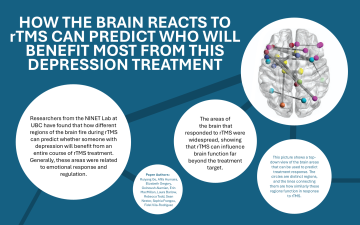How the Brain Reacts to rTMS can Predict Who Will Benefit Most From this Depression Treatment
rTMS is a safe, non-invasive neurostimulation technique used to treat depression. It works by applying a coil to the scalp, which then delivers magnetic pulses that disrupts the way the brain functions in depression. Importantly, it is effective even for people who did not benefit from antidepressants. Predicting who might benefit best from rTMS is an important topic for researchers: it can help direct patients and clinicians to whatever treatments would be best for them. The researchers of the current study were wondering if how the brain reacts to rTMS can be used to predict whether someone with depression would benefit from this treatment. Specifically, how the functional connectivity between brain areas changes with rTMS.
Four Paths of Response to rTMS in Treatment-Resistant Depression
rTMS treatment outcomes are very diverse. Some may improve almost instantly, others may require a higher number or intensity of treatments, and others may not respond at all. Understanding the diversity of rTMS treatment responses can be important in order for clinicians and patients to find the best, personalized treatment approach for their depression. The aim of this study was to describe the number and pattern of unique pathways (i.e., trajectories) of improvement to rTMS among a large group of people with treatment-resistant depression.

